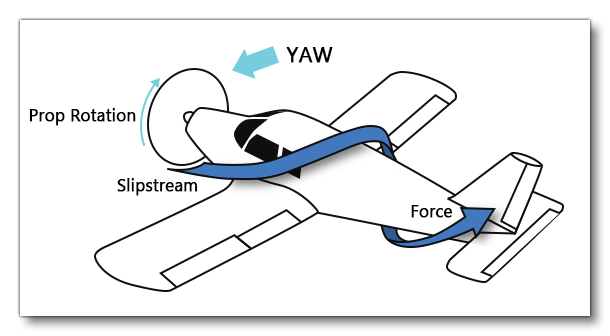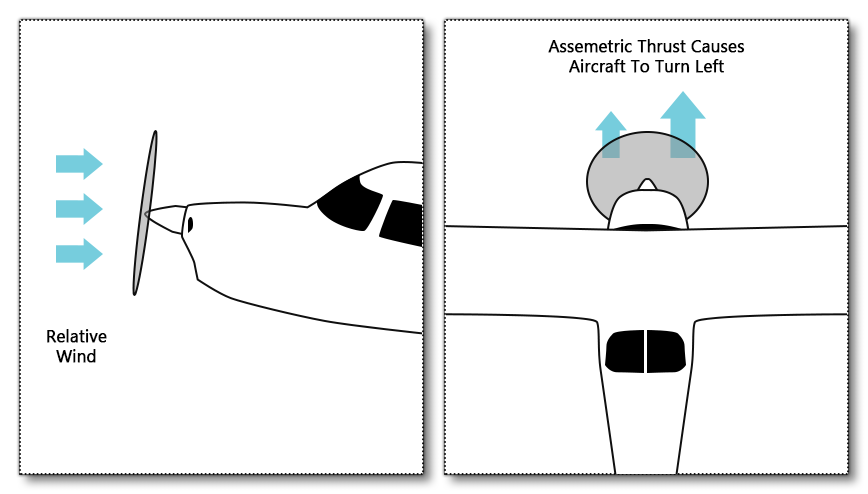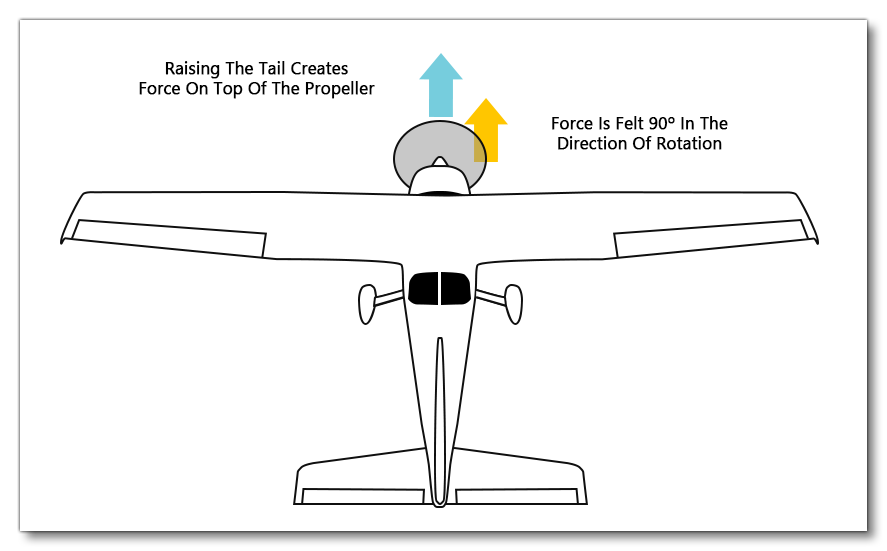ENGINE FINE TUNING
Microsoft Flight Simulator uses a simulation that not only models the effects of atmospheric turbulence, but it also models basic engine effects caused by the airflow which is generated by the engine: for example, the increased effect of the rudder and the elevator, the increased lift of the wings, or the turbulence generated by the propeller. These things are all automatically simulated by the aerodynamics surface simulation based on input parameters, and as such will need to be tuned just like the other elements of the aircraft.
NOTE: It is important to understand that the engine effects discussed here compensate and interact with each other and that you cannot tweak or change just one or two of the parameters only otherwise you will get parasitic roll or yaw movements.
Propeller Wash Vortex
For piston engines and turboprops, an important effect to take into consideration is caused by the propeller wash. This isn't flowing in a straight line backwards from the propeller, but instead it makes circles around the aircraft in the form of a vortex:

Because of this, the wash will hit the left horizontal tail, the vertical tail and the right horizontal tail differently, creating a roll and yaw movement. So, within the simulation in order to compensate for the induced yaw moment at cruise speed, a 0.45° deflection is automatically added to the rudder. However you may wish to adjust this value, which is done using the Engine Wash On Roll (engine_wash_on_roll) parameter in the Flight Tuning section of the Flight Model tab:
 We recommend setting this parameter to 1, which represents the simulation that is closest to reality. However it can be changed to tweak the aircraft behavior if required.
We recommend setting this parameter to 1, which represents the simulation that is closest to reality. However it can be changed to tweak the aircraft behavior if required.
The above mentioned parameter and the automatic 0.45° deflection of the rudder won't be enough to counter the prop wash effect entirely however, and the definition of one other engine effect will be necessary. This is the Torque On Roll (torque_on_roll) parameter, also in the Flight Tuning section:

This is a factor that will be used to adjust the torque on roll effect, which is caused by the turning propeller: when it turns it creates rotational friction, which in turn makes the plane roll in the opposite direction. We recommend setting the torque on roll effect to 1 to start with and then to adjust it slightly. You want to ensure that the aircraft does not roll or yaw sideways at cruise speed with cruise power.
Finally, you will want to set the engine Rudder Wash On Roll (rudder_engine_wash_on_roll):
 This parameter scales the amount of added rudder trim that will be used to compensate the engine wash impact on roll. Like the others, it should be set to 1 to start with and then tweaked as required.
This parameter scales the amount of added rudder trim that will be used to compensate the engine wash impact on roll. Like the others, it should be set to 1 to start with and then tweaked as required.
P-Factor And Gyroscopic Precession
P-Factor - which is also called "asymmetric propeller loading" - happens when the downward moving propeller blade takes a bigger "bite" of air than the upward moving blade, and so produces an asymetrical amount of thrust.

To adjust/calibrate this effect you should be changing the following parameters in the Flight Tuning section of the Flight Model tab of the aircraft editor:
- P Factor On Yaw (
p_factor_on_yaw): Scales the amount of p-factor induced yaw. P-factor is the result of the propeller providing asymmetric thrust when the propeller is not aligned with the trajectory.

A spinning propeller is essentially a gyroscope - ie: a spinning disc. That means it has the two main properties of a gyroscope: rigidity in space, and precession, which is what happens when you apply force to a spinning disc. Here's how it works: you apply a force to one point of the disc, and the effect of that force (the resultant force) is felt 90 degrees in the direction of rotation of the disc.

To help control this effect you have the following parameters:
- Gyro Precession On Pitch (
gyro_precession_on_pitch): Scales the amount of gyroscopic precession the engine causes on the aircraft's pitch. - Gyro Precession On Yaw (
gyro_precession_on_pitch): Scales the amount of gyroscopic precession the engine causes on the aircraft's yaw.

The effects the P-Factor and Gyroscopic Precession are mostly felt during aircraft rotation at slow speeds, or during maneuvers, or when the engine power is changed rapidly.